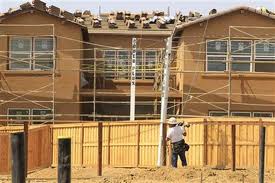There are no perfect properties on the market, but there are many well-tended and carefully rehabilitated homes that are worth a second look. When house-hunting, it is important to keep your emotions in check and your eyes and ears alert.
From a curbside vantage, observe the roof line. A sagging part of the roof, no matter how small, indicates major trouble because it may mean that roof replacement is required to bring the home up to standard. A change in the roof’s pitch may be caused by pressure from rain and snow or improper roof repairs.
Ensure that the chimney, if there is one, is perfectly aligned. Even a slight shift could indicate problems with the integrity of the roof structure. Use neighboring homes as a reference to determine roof pitch. It is also helpful to bring a pair of binoculars along to sight the condition of roof tiles or shingles. Roof replacement is a major expense, typically exceeding $8,000 depending on size and materials.
Foundation Issues
Problems with the foundation of a house can be a deal-breaker. Whether the foundation of a home is a concrete slab, basement, concrete footing or enclosed crawl space, some shifting will occur over time. However, conspicuous horizontal cracks especially when broken bricks are involved can be a sign that the home’s foundation is dangerously compromised. Homes in flood zones and on hillsides are particularly prone to foundation problems.
Many fixes are available for a failing foundation depending on the cause of the problem. In most cases, repairing foundation is expensive work
Uneven and Sloping Floors
Creaky floor boards are not problematic unless the entire floor is uneven or exhibits some slope. A marble or a carpenter’s level can be used to determine if the floor is sloping. Uneven or angled floors may be a sign of foundation problems, rotten or failing floor joists or a break in the slab foundation.
In any case, repairing the underlying cause of sloping floors could be a challenging and pricey undertaking. Some shifting and sloping is normal especially in older homes, but it is best to determine the causes before committing to the house.
Misaligned Doors and Windows
Doors and windows that are not square to the angles of the house could indicate some shifting that is normal for older homes. The causes may be as simple as missing parts or as complicated as foundation problems. The former costs very little fix, but the latter will require the services of a licensed contractor to do the repair work.
Water Intrusion
Look for any sign of leaks on the ceiling, the walls and the floor. Sellers may have done cosmetic fixes such as repainting or carpet replacement. Be alert for musty smells that may indicate mold growth in non-visible areas such as inside the walls. Look for evidence of water stains in kitchen, bathrooms and on ceilings.
Plumbing leaks can be found and fixed easily. Roof leaks may require roof repair or roof replacement.
Seller Disclosure
In most states, sellers are required to make full disclosure of any issues or defects that may affect the value of the property for sale. Buyers should use the services of an experienced and trustworthy home inspector to determine if buying the house is a viable option given whatever issues the house may harbor. Home inspectors can usually include a ballpark figure for repairs that may be needed to bring the house up to snuff.
Often, buyers can use the home inspector’s report to haggle for a deep discount. However, there may be times when the prudent thing to do is walk away from an attractive home that requires too many repairs and has the potential of turning into a money pit rather than a dream home.
Leslie Harmon is a proud new home owner who found these tips very helpful when searching for a new home. She was under suspicion of the agent trying too hard to sell the house quickly rather than being completely forthright about the condition it was in.




